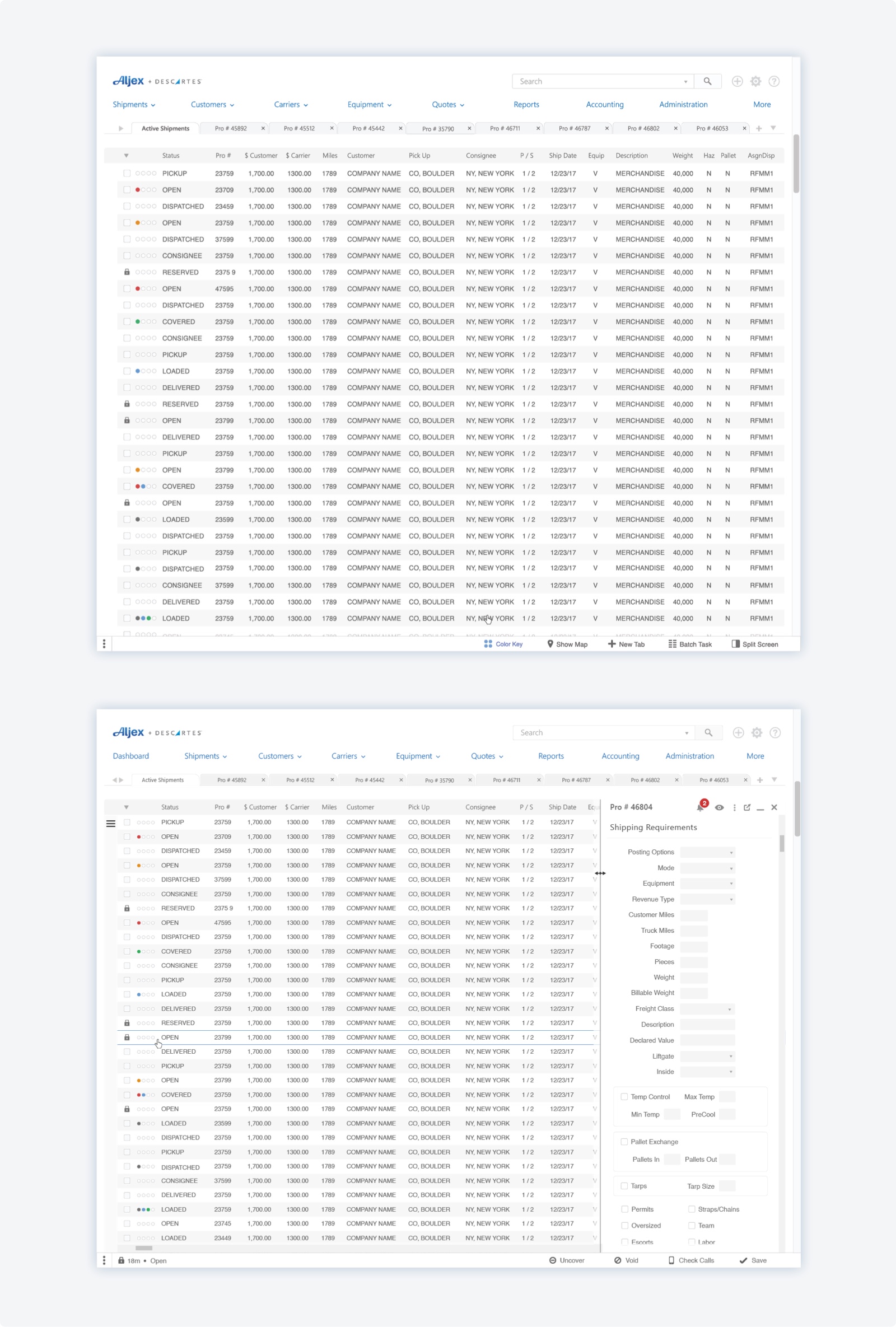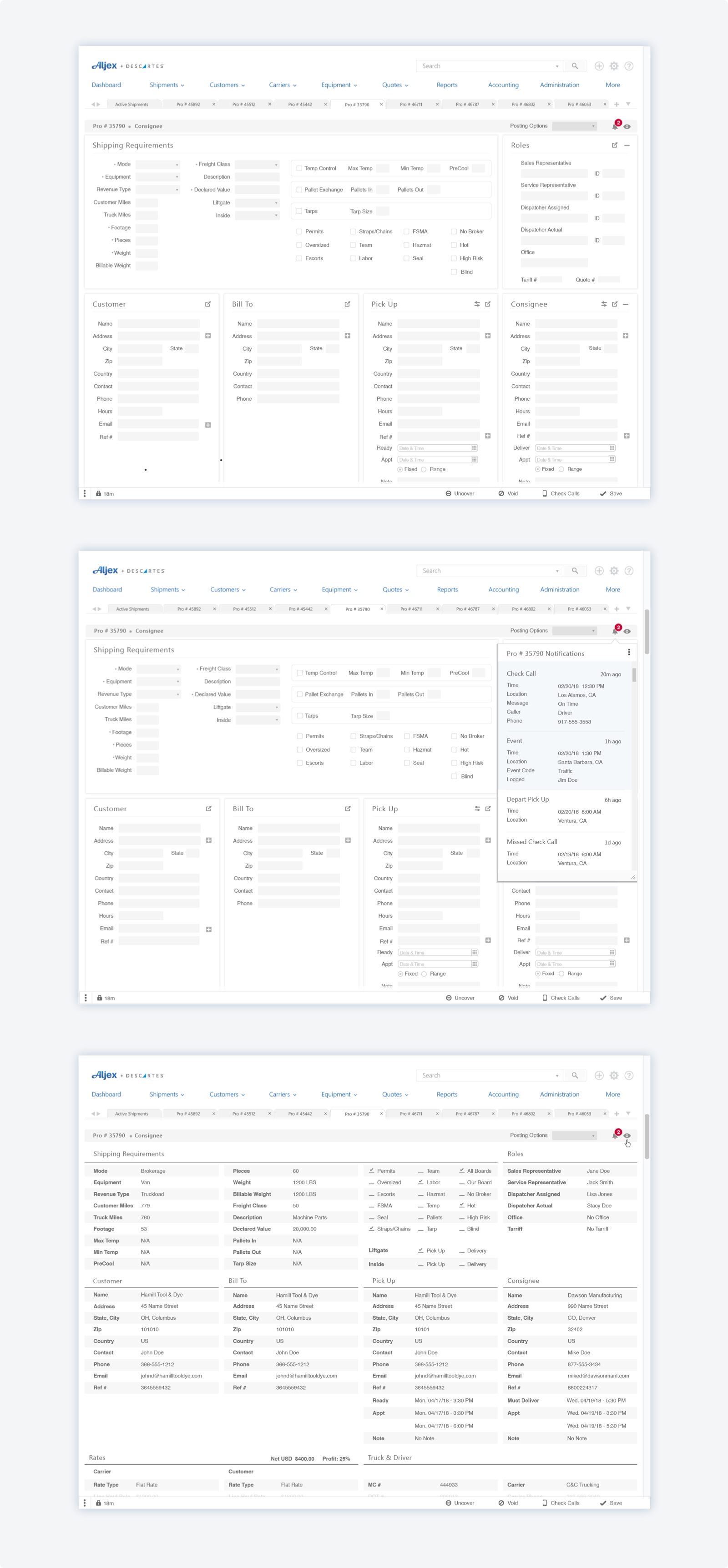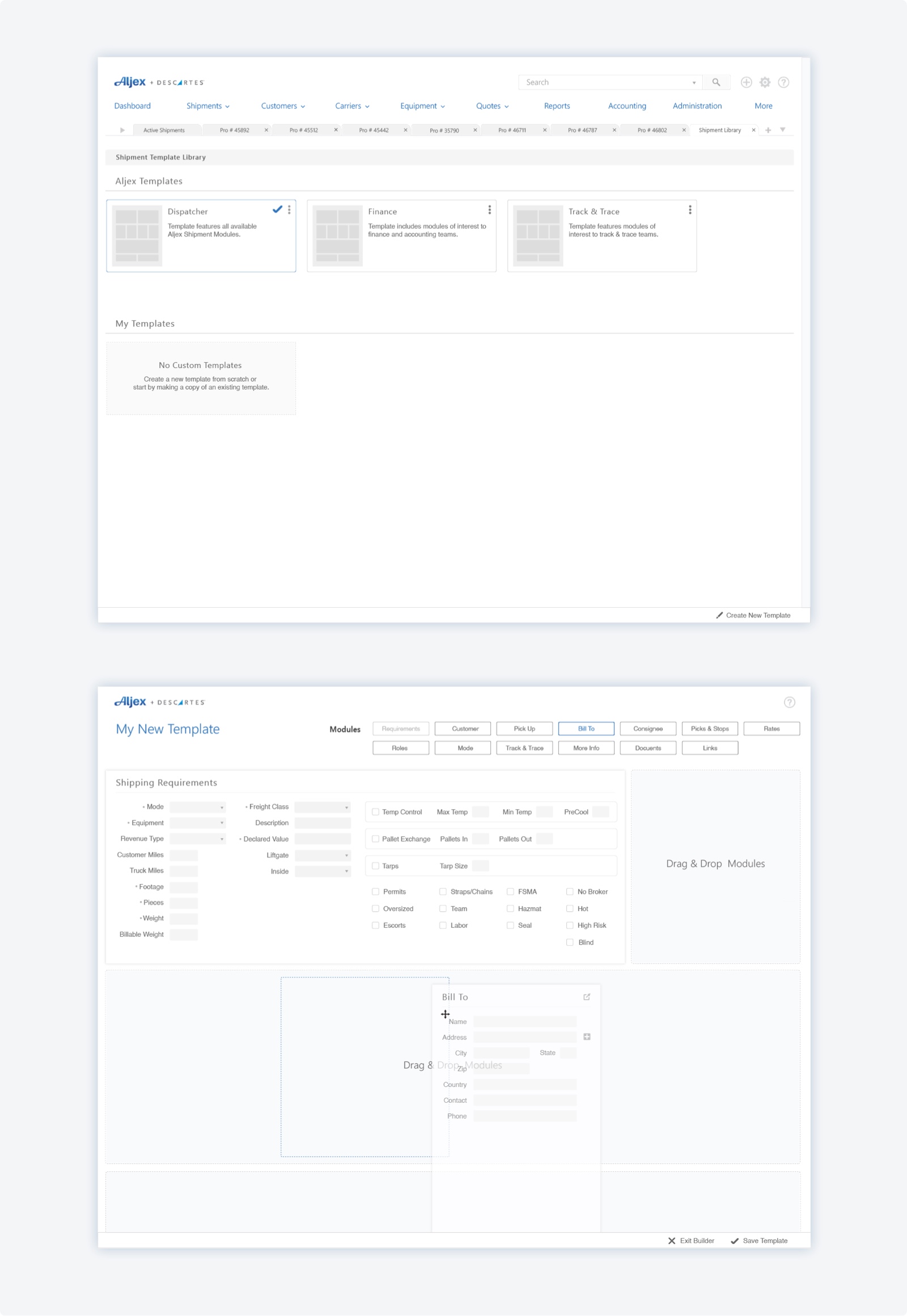Optimizing distribution
Simplifying supply chains with microtask automation.

Aljex is a versatile supply chain management and real-time shipment tracking software that bridges the technology between legacy order processing and a warehouse/distribution models. Alex helps shipment managers evaluate inbound procurement and outbound shipping orders in order to offer best-case routing solutions. Users must evaluate their options and pass them to the transportation provider, selecting the best mode and least-cost scenario.
With a complex dashboard of tools that helps automate daily tasks and provides full visibility throughout the entire supply chain, Alex eliminates manual track and trace operations, increases on-time delivery performance, and improves customer satisfaction with a technology platform that simplifies cumbersome manual processes.
For Aljex, I worked with a product team to craft a simple and intuitive solution to improve the software’s dated and cluttered user experience.
Target audience
Aljex’s internal shipping software has two primary users - the drivers and the shipment managers. Delivery drivers would refer to the app to understand their routes and parameters or their shipment jobs. And shipment managers would create, edit, and manage shipments at each step of the way.
To best understand how we could improve Aljex, we looked to competitor software, including 3PL and Cin7, as well as big data SaaS, and modern services that presented complex tabled data such as Airtable.

Presenting complex data
The Aljex software needed to handle a lot of data at once. This much was clear. However, we needed a way to streamline the information so that shipment managers and drivers could easily find what they needed. To accomplish this, we restructured the navigation so that users could easily search for shipments via the search bar, create new shipments via the + icon, and access the settings.
One important factor Aljex stakeholders were concerned with, was making the system improved, yet familiar to shipment managers. The onboarding process for shipment managers had taught them to use the software in a particular way. And it was ideal for us to improve the user experience without rebuilding a wheel that existing shipment managers would not understand. For example, the existing Aljex software would open a new tab per shipment in the shipment manager’s browser. This left an onus on the shipment managers to toggle back and forth between different active shipment tabs. In order to simplify this without changing the inherent task itself, we introduced a tab system to the software. Modeled after browsers and text editors, we stuck to elements that users would be familiar with - tabs, closing icons, and the ability to scroll through tabs.

Simplifying shipment search
In order to display a shipment filter page and a large amount of data per shipment without clutter, we needed to restructure. The original Aljex shipment search used a plethora of colors to indicate shipment status, as well as bunching select options into a large and difficult to read cluster. While color-coding made sense for tracking tags, in this case it was overkill as some colors ended up being too closely related to others, such as red and orange. We also needed to consider that color was not a dependable metric, as in the US 10% of men and 1% of women are colorblind. For this reason, we opted to pair the color-coding system with its respective copy.

Simplifying form entry
The Aljex shipment details page needed a makeover as far as content hierarchy and grouping. We made sure to keep the data fields precise, while grouping the content into categorical formats that would translate well across devices. We also improved the readability of the page with larger fonts, spacing, and a white text-background to replace the washed out gray color.

On-the-go use
The simplified tab system, navigation, and shipment fields and details were designed mobile-first and translated easily across different device sizes.

Looking forward
As shipment managers and drivers acclimate to the new and improved software, we will be tracking analytics and asking ourselves:
- What features do shipment managers use the least?
- What features do drivers use the least?
- Is there any field that experiences frequent misentry of data by type or value?
- Where do users handle the software slower and how can we improve readability in these areas?





